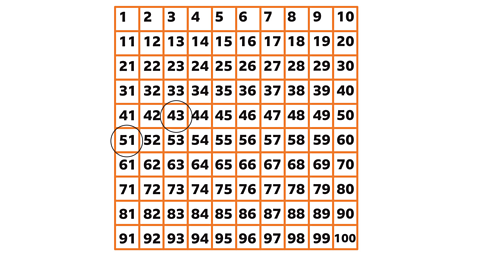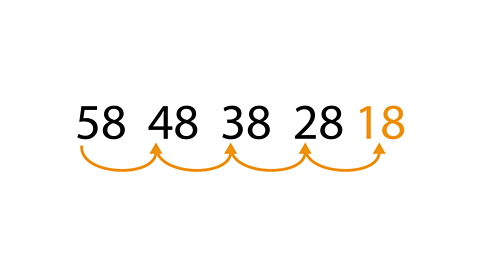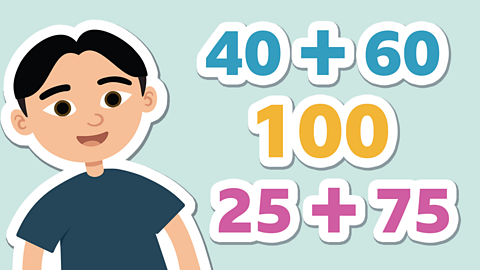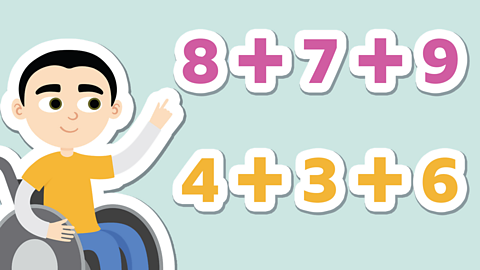Adding a one-digit number and a two-digit number
To add a one-digit number to a two-digit number, start with the bigger number and count forwards with the smaller number.
43 (larger number) + 8 (smaller number) = 51
You could find the number on a number square and count forwards. Find number 43, then count forwards 8 ones to get 51.

Subtracting a one-digit number from a two-digit number
To subtract a one-digit number from a two-digit number, you also start with the bigger number, but you count backwards.
Try it on the 100 square above.
43 - 8 = 35
Adding two two-digit numbers
When a number problem uses two two-digit numbers, we break down the numbers into tens and ones.
55 + 34 = ?
Start with the tens and add them together.
5 tens + 3 tens = 8 tens
or
50+ 30 = 80
Then add the ones.
5 ones + 4 ones = 9 ones
or
5 + 4 = 9
Finally add both answers together.
80 + 9 = 89
Subtracting two-digit numbers from two-digit numbers
To subtract a two-digit number from a two-digit number we count back the tens of the smaller number and then count back the ones.

What is 58 – 44 = ?
44 has 4 tens so we count back 4 tens from the bigger number 58.
58 count back 4 tens:
58, 48, 38, 28, 18
Finally use this answer and then count back the ones:
18 – 4 = 14
Therefore:
58 – 44 = 14


Top tip!
You can use a one hundred square to help you count backwards and forwards.

Activity 1
Get a piece of paper and a pencil, then listen to this quiz. You only have 10 seconds to answer each question so write the answers down quickly!
Finished? Check your answers . The questions are also written out, if you can't listen to the quiz out loud.
Activity 2
Play our fun maths game Guardians: Defenders of Mathematica. gamePlay our fun maths game Guardians: Defenders of Mathematica
Use your times tables and more maths skills to defeat monsters and reclaim the Kingdom of Mathematica

More on Adding and subtracting
Find out more by working through a topic
- count8 of 23

- count10 of 23

- count11 of 23
